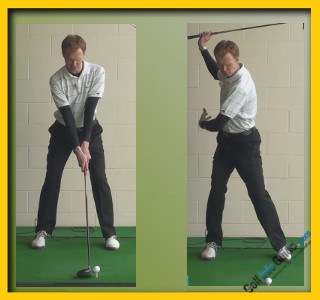Who Is He?

Surely Tiger Woods needs no introduction! It is safe to say that he is one of the most recognisable athletes, if not people on the planet. He has 14 major championships, he has over 78 tour wins worldwide, but possibly more important than that he is one of the main reasons why younger golfers start playing golf in the first place.
Love him or hate him, it is clear to say that the golfing landscape would look very different if Tiger Woods had decided to become a navy seal instead of a golfer, and it is clear that that landscape would not look so healthy. Prize funds would be lower, media attention would be lower, galleries and television viewers would be lower, and participation of golfers at all levels around the world would be lower.
What He Does
There has been more written about Tiger's golf swing over the last 20 years than any other swing in the history of the game. Tiger has had some well documented changes between swing coaches, which have all resulted in some small changes to his swing. The bottom line, however, is that he had a fantastic swing by the age of 18 years old. He was also gifted with one of the most powerful physical frames of any golfer, as well as having undoubtedly the world's best golfing brain.
What Can You Learn?

Apart from trying to copy pretty much everything that Tiger Woods does on the golf course and in practice sessions, you could be encouraged to copy two key areas.
Firstly, Tiger's approach to his long game, in particular, his very full and free flowing motion. His release through the golf ball, which often sees him spin the golf club completely around his back to point it back down the target line, has become one of his trademark moves and is responsible for some of his huge distance, superb balance and consistency.
Secondly, you should notice how Tiger makes a subtle but very distinct difference when he is playing his shorter irons. These shots become more about control and less about distance. Therefore, Tiger makes a change to the length of his backswing, which becomes shorter, and also a very noticeable difference to his follow through which becomes a lot more curtailed. With the short irons, this follow through often sees the club stop just above chest height which often results in the club pointing vertically towards the sky as he watches the ball land dead on target. This knocked down back and through motion gives Tiger much better control of his distance, spin, strike and accuracy.
What Should You Avoid?
In the early days of Tiger's golfing career, his desire to launch the ball as far as possible, coupled with his supreme flexibility, would often result in the golf club getting stuck too far behind his body, which in turn would result in him flipping his hands through the impact phase, which would be responsible for his rather dramatic two way miss. That is to say that Tiger had the ability to hit the ball a long way to the right or the left of the fairway without necessarily feeling which shot is coming next.
If you feel that you sometimes get the club trapped behind your body too, then like Tiger, you should try to work on getting the golf club more in front of your body and connected. This will help you to swing the club up and down more instead of around your body.






